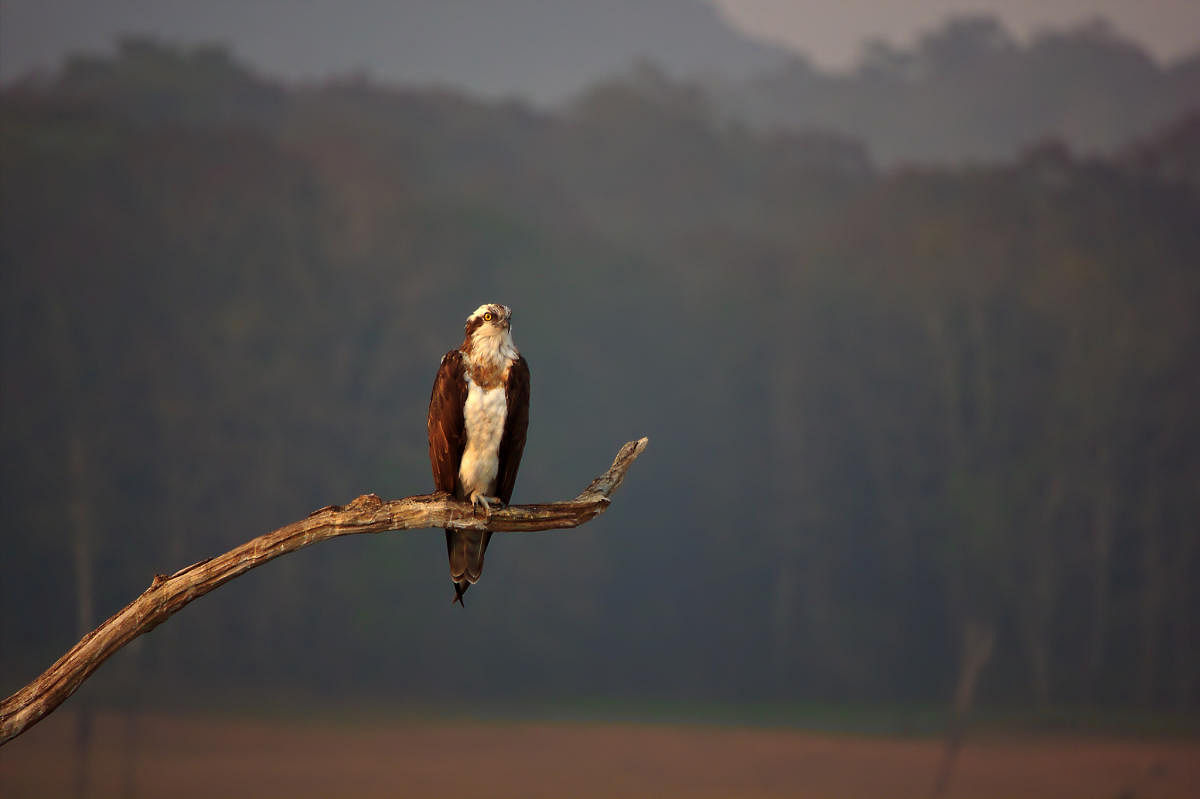A winter morning at Ranganathittu Bird Sanctuary, just outside of Srirangapatna near Mysuru, can often appear like a painting. Sunbeams cross the scene like brushstrokes, spreading over a canvas of a dark and secret green. A hint of fog floats, wisplike, over the water. It is a different world, often unbelievable in its calm and silence. It’s made real only by the soft plop of our boatman’s oar where it parts the water which then runs past our hull, gurgling by in a gentle obedience.
The pelicans sail through the water. They are big birds, white and spotless, and look suitably regal. Every once in a while, their great beaks dip into and out of the water, leaving drops that trail through the air, glinting like silver in the morning light. And it’s arresting to watch them in flight, which always seems to begin in a bit of a heave and a struggle, before their great wings finally get them up and swooshing through the air, their white wingtips aflame with the golden light caught from the sun.
And then they’re the painted storks. They watch you from the riverbank. Large and dainty birds, with delightful flecks of pink and black on them, they’re often clumsy, especially when they congregate on the treetops, where there can be quite a jostling for space. Spoonbills walk along the banks too; brilliant white, the tufted crest on their heads erect in the slight breeze.
In the early hours of the morning, the often-heard but rarely-seen grey francolin keeps up its war cry, while the plaintive calls of the red-wattled lapwing and the Indian peafowl echo through the landscape. In the reeds along the edge of the water, there are flitting movements, as herons and egrets stalk their prey and move like shadows.
Sometimes you will find them frozen like a statue and looking sternly into the depths of the blue water, as these expert fishers go about their morning feeding sessions.
Ranganathittu Bird Sanctuary (also known as Pakshi Kashi of Karnataka) is the largest bird sanctuary in the state and is centered around six islets on the banks of the Kaveri river. These islets, originally 25 in number, were formed when an embankment across the Kaveri was built between 1645 and 1648 by the then Wadiyar king of Mysore.
The legendary ornithologist Salim Ali had observed, during his survey of the birds of Mysuru, that these islets formed an important nesting ground for a large variety of birds, and had persuaded the king of Mysuru to declare the area a protected area, which was finally done in 1940. This sanctuary is now a haven for birds and other wildlife, and a hotspot for migratory birds in South India.
Home away from home
Pelicans, spoonbills, storks are among the numerous species of migratory birds that find a home in this corner of Karnataka, though it is only a tiny sanctuary, less than one square km in size. Especially during winters, when it gets cold and snowy across vast expanses of Europe and Asia, these migratory birds head towards warmer climes further south, and the Indian Subcontinent with its abundance of watery marshes and wetlands provides the perfect habitat for them to forage and breed. Being such a preferred destination for migratory birds, it’s no surprise that 240 species of birds can be seen here. The main migratory bird species that can be seen most often are the Eurasian spoonbillpelican, great white pelican, wooly-necked stork, open-bill stork, Eurasian spoonbill, osprey, lesser whistling duck, bar-headed goose, river tern, thick knee and the little- ringed plover, among others.
One can also delight in seeing darters, peafowl, ducks, herons, bitterns, flycatchers, kingfishers, egrets, sandpipers, swallows, owls, warblers, babblers and a wide variety of other species.
The riverine ecosystem of this sanctuary is fed by the monsoon rains and the impounded Kaveri waters upstream. The isolation of the six islets, and the fact that the soil along the river is soft and loamy with a surrounding landscape that is essentially fertile agricultural field, has led to the abundance of aquatic marine and insect life which, in turn, attracts these migratory birds. And, as for the resident birds, this is what makes this place a
preferred breeding ground.
Though the area is protected and a 28-sq -km eco-sensitive zone notification is in place, some threats exist. The hunting of birds is very rare, but illegal fishing does take place using explosives, which also harms the otter population.
In the Gendehosahally part of the sanctuary, smuggling of sandal wood trees have happened and the surrounding villagers do sneak in to collect firewood. When the water is low, especially in summer, some cattle have strayed onto the islands.
Flooding
And the one major threat that remains is the release of excess water during monsoon from the KRS dam located upstream, especially in the years when bursts of intense rain swell the water level suddenly, causing damage to the islands where there are nests and the hatchlings of roosting birds. Plans are afoot for erecting stone barriers to offer protection to the islands from this monsoon deluge.
This magical land not only for birds but for many mammals and reptiles as well is probably the best place in Karnataka where the spectacle of bird migration can be seen in all its glory. That alone is enough reason for us to cherish it, but most importantly, protect it at all costs.
